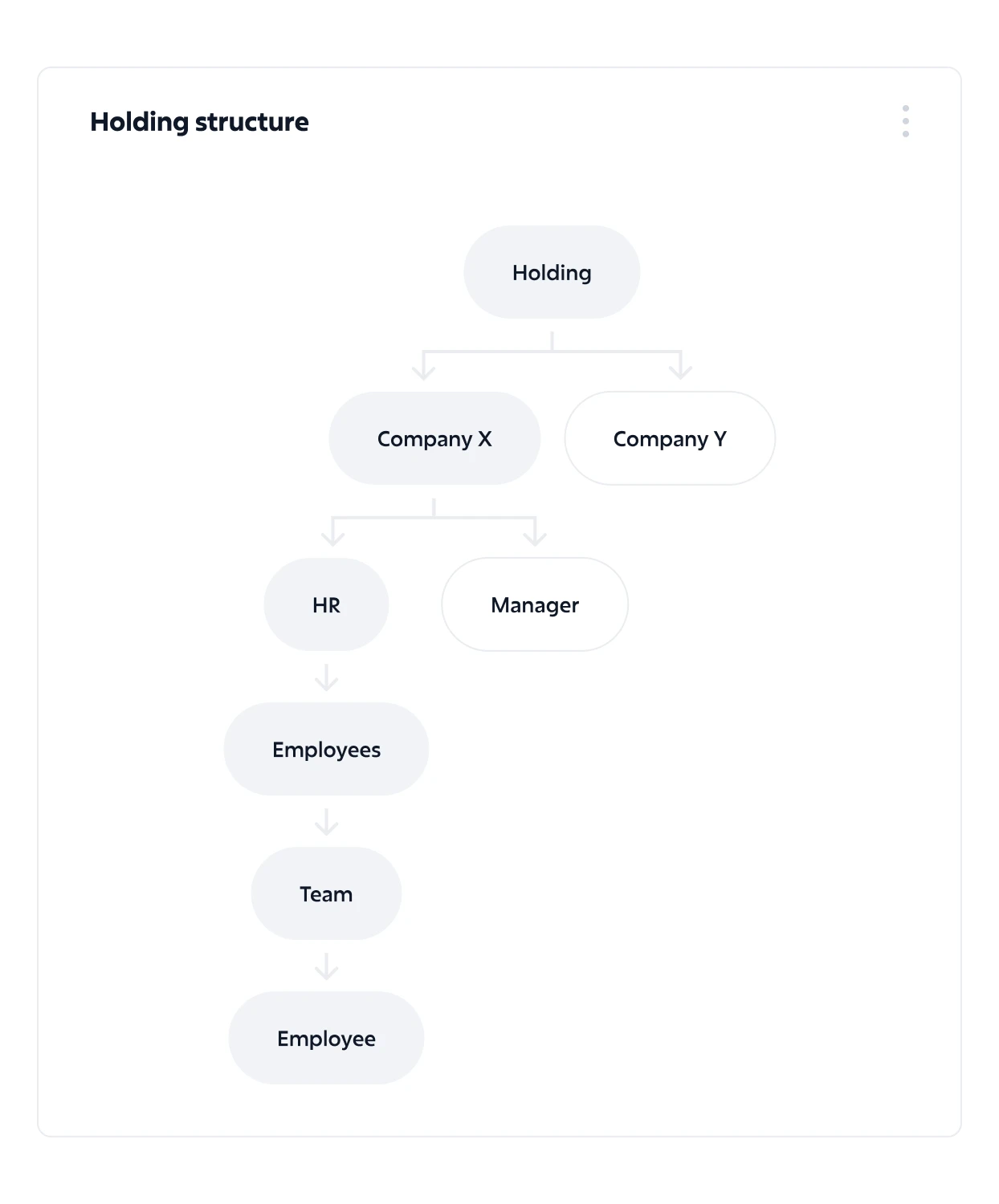The Importance of Holding and Team Structures for Organizational Growth and Efficiency
Every organization evolves and grows, and when you reach a stage where managing everything within one team becomes ineffective, the question arises: what organizational structure is best for your business? Two commonly used structures worth considering are the holding structure and the team structure. Both have their advantages and challenges, and each may be ideal for a different type of organization. Let’s take a closer look!
Holding Structure: Division into Independent Units
The holding structure is an excellent choice for companies that aim to expand, diversify, and operate multiple businesses or projects under one umbrella. In a holding structure, individual divisions or subsidiaries are independent and have their own management. This model offers significant flexibility. Each unit can operate independently, simplifying the management of specific business areas. The holding structure is ideal for large companies with diverse business sectors that require clear separation.
Advantages of the Holding Structure:
- Flexibility and Specialization – Each division can operate in its own way, fine-tuning its processes to perfection. This can result in higher efficiency and performance.
- Limited Risk – If one division fails for any reason, others can continue their operations unaffected. This minimizes risk for the entire holding company.
- Easier Expansion – Want to enter new markets or venture into new areas? No problem. Simply establish a new subsidiary that operates independently.
Challenges of the Holding Structure:
- Complex Management – Managing a larger number of independent divisions can be challenging. Strong leadership is needed to keep everything aligned.
- Higher Administrative Costs – Since each division requires its own management, financial resources, and administrative support, costs tend to increase.
Team Structure: Collaboration and Efficiency First
If your organization is smaller, more flexible, or has tightly connected teams, a team structure may be more suitable. This model emphasizes collaboration among individuals and often involves less hierarchical division. Teams are autonomous and focus on specific tasks or projects.
The team structure is ideal for innovative organizations that prefer a flexible approach to work and quick responsiveness to changes. Teams focus on achieving specific goals, and employees have more room for creativity and decision-making.
Advantages of the Team Structure:
- Fast Communication and Flexibility – Teams can jump into action immediately, respond to changes, and adapt to new challenges—perfect for a fast-paced, dynamic market.
- Higher Employee Engagement and Motivation – When people have more autonomy and involvement in decision-making processes, they tend to be more motivated.
- Efficient Problem-Solving – Team collaboration brings diverse perspectives and ideas, enabling faster and better solutions to challenges.
Challenges of the Team Structure:
- Possible Role Duplication – Without clearly defined departments, tasks may overlap between teams, slowing progress and reducing efficiency.
- Need for Strong Leadership – Even with its flexibility, a team structure still requires strong leaders to guide teams effectively and maintain operations.
Which Model is Right for Your Organization?
Choosing between a holding and a team structure depends on your organization’s size and goals. If you have a diversified business with various sectors and want to minimize risk, a holding structure could be the right choice. On the other hand, if flexibility, quick decision-making, and close collaboration are crucial, a team structure is likely better.
Whichever model you choose, the key is that the right organizational structure can help you achieve your goals more quickly and effectively. When these structures are combined, an organization gains the flexibility and specialization of a holding structure along with the dynamism and innovative strength of a team structure. Together, they help businesses grow and adapt to changes—something essential in today’s fast-paced and competitive world.












